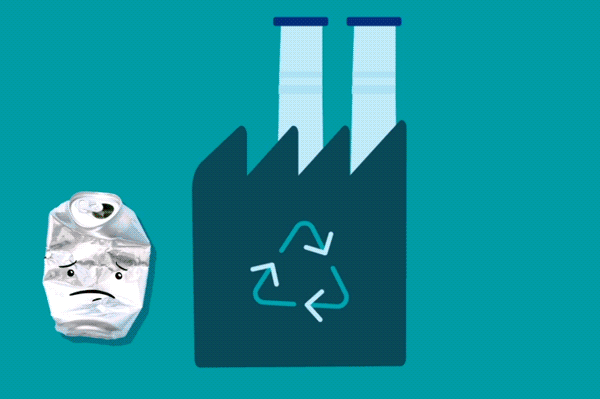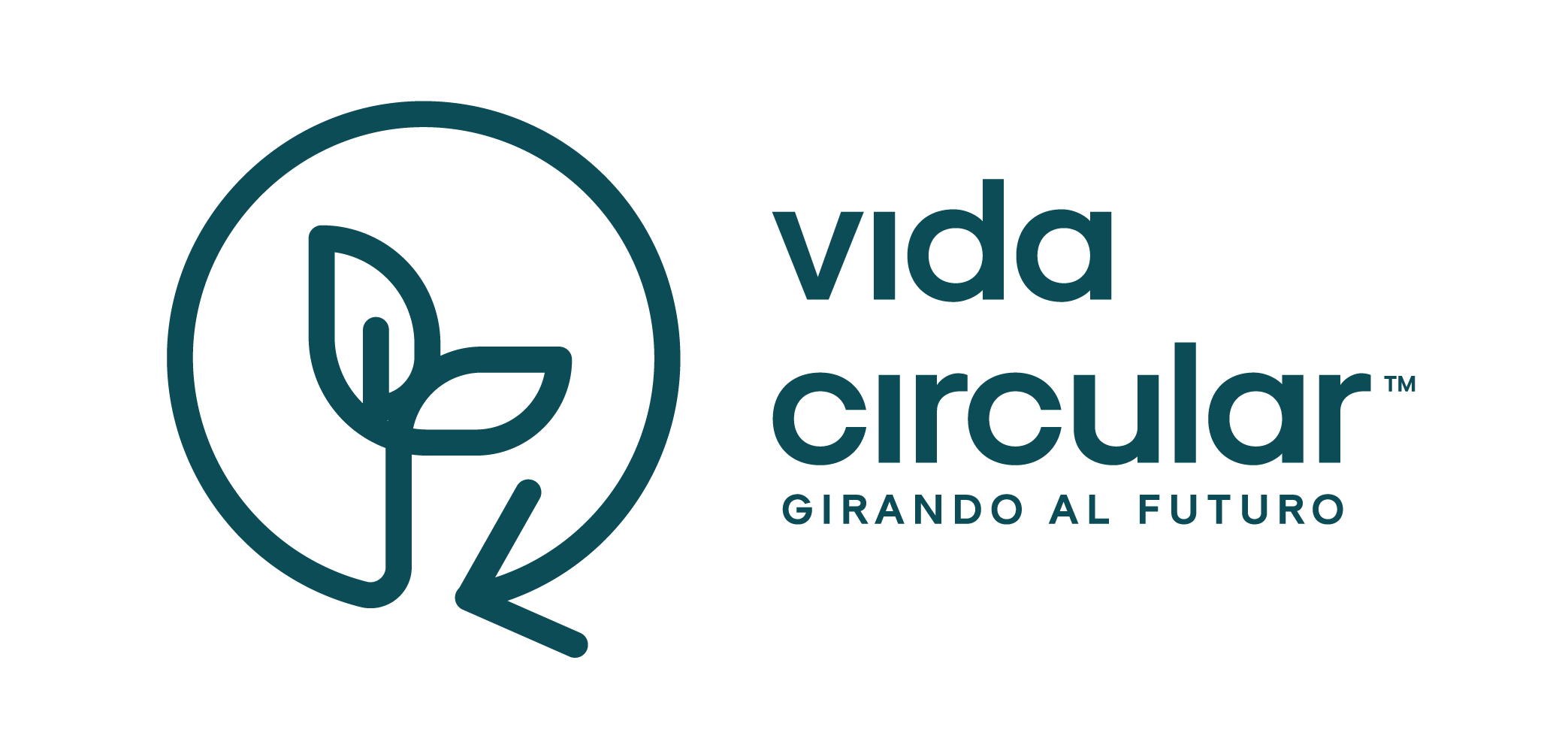
Recyclable materials: Types, processes and tips to optimize recycling
Recyclable materials are those that, once used, can be transformed back into useful products if properly managed. We, as individuals, play a fundamental role by separating these materials in our homes or workplaces, which enables industries to process and recycle them efficiently.
By sorting materials such as plastic, glass, cardboard and metal, we make it easier for them to be reincorporated into the production cycle instead of ending up in landfills or polluting the environment. For example, a plastic bottle for example, a well-sorted plastic bottle can become a new bottle or another plastic product, while recycled paper can have many lives before it degrades completely.
Types of recyclable materials and how they are separated
In our day-to-day lives, we use a wide variety of materials that can be recycled, but it is not always obvious how to handle them. Understand the different types of recyclable materials and how to separate them. separate them correctly is key to facilitating the recycling process. Here are the main types of recyclable materials and their characteristics:
Glass is one of the few materials that can be infinitely recycled without loss of quality or purity. It is also one of the easiest materials to process, but requires careful handling. It is important to separate glass containers by color: clear, green and amber. This is because its processing varies slightly according to color, and mixing different types of glass can make it more difficult to process. It is also advisable to remove the lids or cork caps and rinse the containers before discarding them. Remember that not all glass is recyclable; items such as broken glass, mirrors or light bulbs require special treatment.
Plastic is one of the most recycled materials, as not all types can be processed in the same way. These materials are classified by a code within the corresponding symbol. The most frequent are type 1 plastics (PET), used in water and soft drink bottles, and type 2 (HDPE), found in cleaning product containers and personal hygiene products. It is essential to check this code and separate plastics according to their classification, since some, such as polystyrene or PVC, require more complicated processes to be reused.
This composite material is a bit more complex to recycle because it is made from a mixture of cardboard, aluminum and plastic. However, more and more recycling plants are equipped to handle Tetra Pak, separating these components for effective reuse.
These containers, popular in juices and milk, should be completely emptied and, if possible, rinsed to avoid unpleasant odors. Flatten them to save space and remove lids or straws, as they are handled separately. Check if your community has facilities that accept Tetra Pak to ensure proper handling.

Where to get recyclable materials?
Recycling is not complicated if you know where to find materials. Whether at home, at the supermarket or at other collection points, there are many ways to collect and separate these materials so they can be effectively recycled. Here are some of the best sources of recyclable materials to help the environment:
1. At home
Your home is a constant source of recyclable materials that you can store for later collection. Products we use every day, such as bottles plastic bottles, soda cans, cardboard boxes and glass jars, can be separated and stored for recycling. It is important to have different containers at home to correctly classify recyclable materials, which facilitates the process when you take them to a collection point. Don't forget to keep the materials clean and dry to avoid contaminating them.
2. Local businesses
More and more supermarkets and stores are adopting initiatives to promote recycling by offering collection points for specific materials. These may include garbage cans for batteries, plastic bags, small electronics and even used clothing. By taking advantage of these points, you not only dispose of responsibly, but also facilitate the recycling of materials that would otherwise end up in the regular trash. Ask local businesses about the options available and contribute every time you shop.
3. Recycling centers
Many cities have specialized recycling centers that receive a wide range of materials, from paper and cardboard to plastic, glass and metals. These centers often have specific hours and clear rules about how materials should be delivered, such as separating glass by color or removing labels from bottles. You can check online or with local authorities to find the nearest recycling center and learn about their requirements. Taking your materials to these centers ensures that they are properly processed by the recycling industries.
4. Second-hand markets
Another excellent way to contribute to recycling is to buy second-hand products. By purchasing used furniture, clothing, appliances and other items, you help extend the useful life of those products, preventing them from becoming waste. Thrift markets, antique stores and buy-and-sell apps are great options for finding reusable products. Plus, every purchase at these places means a reduction in demand for new products and, therefore, less pressure on natural resources.
Encourage the use of recyclable materials in the home
Encouraging the use of recyclable materials at home not only helps reduce the amount of waste we generate, but also helps reduce the demand for natural resources. By incorporating recycling into our daily routines, we are taking direct action to protect the environment and mitigate the effects of climate change.
In addition, using recyclable materials encourages creativity and self-sufficiency, helping us to rethink our relationship with consumption. consumption and to find new ways to reuse what we already have. Recycling is not just a gesture, it is a way to contribute to a more sustainable future for everyone.

How does the recycling of recyclable materials work?
These materials undergo a specific process in recycling plants to convert them into new raw materials. Depending on the type of material, recycling includes stages such as sorting, cleaning, shredding, melting and forming new products. Here we explain how the most common materials are recycled.
- Paper and cardboard
The process begins with the collection and sorting of materials, eliminating contaminants such as staples, paper clips or plastics. The paper and cardboard is then mixed with water to form a pulp. This pulp is filtered to remove inks, glues and other residues. Once cleaned, it is dried and pressed into sheets of paper or cardboard, which are cut or rolled to create new products such as boxes, office paper or napkins. - Glass
Recycled glass is sorted by color: clear, green and amber. It is then cleaned and lids, corks and labels are removed. The glass is crushed into pieces called "cullet" and melted in furnaces at about 1,500°C (1,500°F). The molten glass is molded into new containers such as bottles and jars. The recycling of glass is infinite, as it does not lose quality. - Plastic
Plastic recycling begins with sorting by type (such as PET, HDPE). Then, they are washed to remove impurities, labels and food debris. They are then crushed into pellets or flakes, which are melted and extruded into filaments. These are used to manufacture new products such as packaging, pipes or textile fibers. - Metal
The recycling of metals, such as aluminum and steel, is highly efficient. Cans are collected, sorted, cleaned and crushed into fragments. These are melted in furnaces and the resulting metal is cast into ingots or sheets, which are then rolled or cut to make new products, such as cans, car parts or building materials. Recycling aluminum saves up to 95% of energy compared to producing new aluminum. - Tetra Pak
In a Tetra Pak recycling plant, consisting of carton, plastic and aluminum, the packages are shredded and immersed in water to separate the carton from the rest. The carton is converted into pulp and reused in paper products. The plastic and aluminum are separated and used together to make building panels or insulation products.

Conclusion on the management of recyclable materials
The effectiveness of recycling depends, to a large extent, on how we handle recyclable materials from the outset. When we correctly separate paper, plastic, glass and metals at home, we make it easier for these materials to be processed efficiently in recycling plants. Each type of recyclable material, when handled properly, can be reintegrated into the production cycle, reducing the need to extract new resources and reducing the environmental impact.
By understanding the importance of separating and recycling correctly, we are contributing to a more sustainable system, where recyclable materials are not just waste, but valuable resources that can have multiple useful lives. Ultimately, recycling these materials is a key part of building a more environmentally responsible and balanced future.




